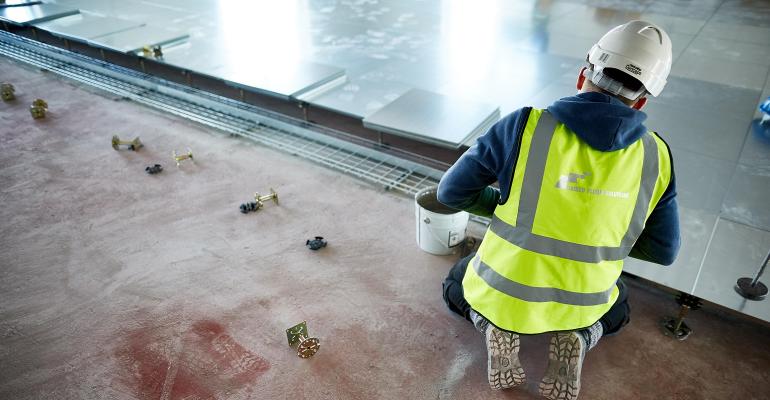It might sound outlandish to say that floors are one of the most exciting components of data centers. After all, the floor – by which we mean literally the thing people and equipment stand on inside a data center facility – usually doesn't receive much thought. Conversations about data center buildings tend to focus more often on topics like HVAC systems and power capacity.
Even data center roofs may seem like a more interesting topic than floors.
But there are good reasons to pay close attention to data center floors. The way you design your floor and the materials you use to construct it have a more significant impact than you might expect on energy efficiency, equipment reliability, and more.
With that reality in mind, here's what you need to know about optimizing floor design and construction in data centers, whether you're building a new facility from the ground up or making changes to an existing one.
How Floors Impact Data Centers
As we mentioned, floors play a pivotal role in data centers in many respects – and not just because they provide a flat surface where equipment can rest. Here's a look at all of the key ways that floors impact data center operations.
Cooling and energy efficiency
Data center floor design and materials can significantly impact how efficiently excess heat can move away from server racks. A cool floor will absorb some of the heat output from servers and other equipment, reducing the amount of energy you need to expend dissipating heat from data center aisles.
Partly for this reason, raised floors are a popular flooring design for data centers. A raised floor design means that you build a platform two or three feet above the building's main floor, which is often a concrete slab in single-story data center facilities. The empty space between the main floor and the raised floor can be used to circulate cool air beneath racks.
An alternative flooring approach is to circulate chilled water within pipes embedded in a concrete slab and use that as your main data center surface. This method is less common, but it offers the advantage of greater energy efficiency because chilled water requires less energy to circulate and, unlike systems that circulate chilled air through duct work, there is no leakage with a chilled water system (unless your pipes are leaky, but if that happens with pipes embedded in a slab, you have bigger problems than energy inefficiency).
Cabling space
The other main reason why raised floors are popular in data centers is that they provide convenient space for running power and networking cables. If you can run most of your cables under the floor, you can keep your main data center space much neater and more accessible.
You don't get that ability if you install equipment directly on a slab floor, of course – which is a factor to consider if you are intrigued by the chilled water system mentioned above.
Data center building cost
The more complex your data center floor, the more it will cost in total to build a data center.
If you want to save money on data center building costs, a slab floor is likely to be the least expensive option. Raised floors have higher costs because they require you to construct a floor on top of a floor.
That said, raised floor costs may be partly (but not fully) offset by the money saved by not having to build HVAC ducts and cable conduits above the data center floor, where they are typically more expensive to construct. In addition, by moving some HVAC and cabling infrastructure below the floor, raised floors can increase the total floor space inside a facility that is usable for server racks, increasing the ROI of data center construction.
Equipment reliability
Your data center's floor may not seem like a major threat to equipment hosted in the data center. But it can be if it allows static electricity charges to build up, leading to shocks that impact servers or other equipment.
To be sure, static electricity is not a huge risk, and in most cases server racks are designed to insulate equipment against static charges. But it's still a factor to consider when planning a data center floor, which you can cover with materials that dissipate static charges.
Equipment installation and maintenance
A final key consideration for data center floors is their role in allowing staff to install equipment and access it for maintenance purposes.
If you build a raised floor but lack an elevator to raise equipment from the ground level to the raised platform, your technicians might find it hard to work with large server racks. (You might also be violating accessibility compliance laws.)
Likewise, if you choose to use upper stories of an existing building to host servers, you'll probably want to make certain that you have elevators capable of moving any equipment you'll be working with.
Conclusion
In many ways, one of the most important factors in shaping data center efficiency and effectiveness is the thing at the bottom of every data center: the floor. Before you assume that the floor's job is simply to provide a surface for people and equipment to stand on, think about the key role that flooring design and materials play in data center cooling, equipment maintenance, facility costs, and more.





